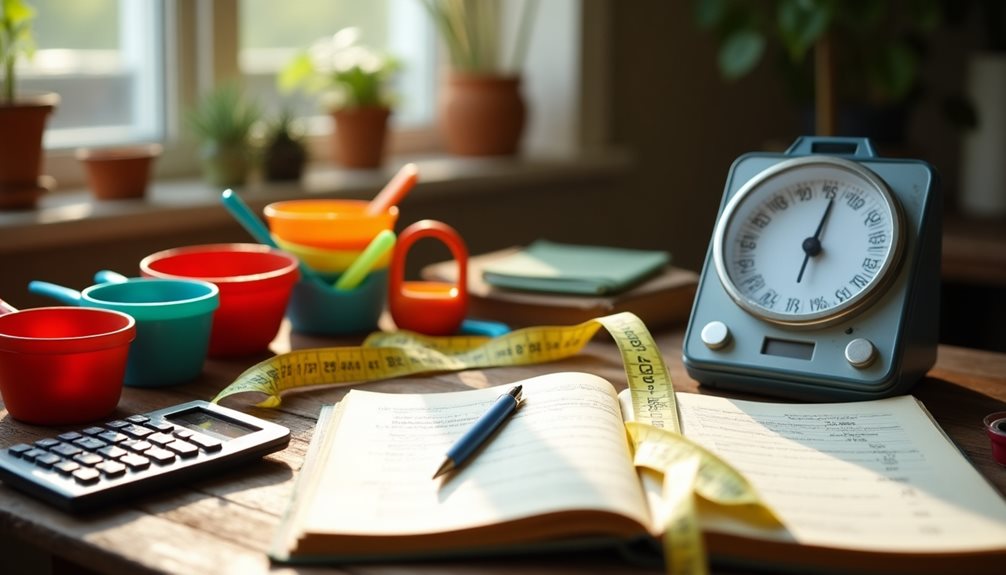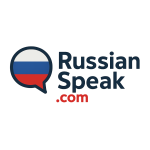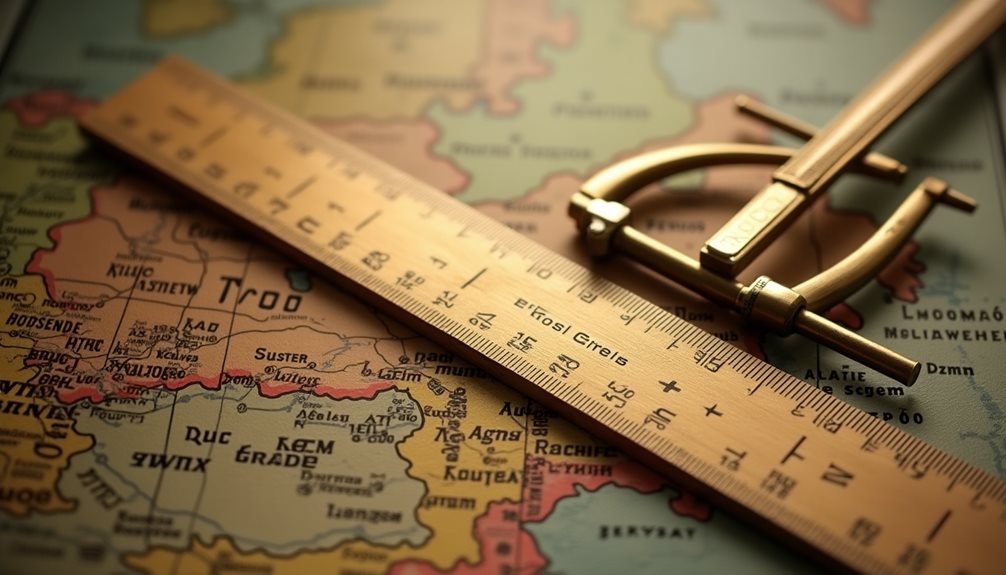The Russian system of measurement operates within a metric framework, which is vital for accuracy in various domains. Understanding kilometers for distance, liters for volume, grams for weight, and Celsius for temperature is essential for effective communication. This standardized approach, established in the 19th century, has significant implications for everyday tasks. However, complexities arise when converting between units or adapting to these measurements, prompting further examination of practical strategies and applications.
Table of Contents
ToggleUnderstanding the Metric System in Russia

Russia officially adopted the metric system in the 19th century, marking a significant shift from traditional Russian units of measurement to a standardized system used widely across Europe and the world. This transition was not simply a bureaucratic update but involved widespread changes in education, commerce, industry, and daily life.
Before the adoption of the metric system, Russia used a variety of traditional units such as the arshin (аршин), sazhen (сажень), pood (пуд), and versta (верста). These units often varied regionally, causing confusion and inefficiency in trade and communication. The metric system, based on meters, liters, and grams, was introduced to create uniformity and simplify calculations.
The official adoption began during the reign of Tsar Alexander II in the 1860s, influenced by European scientific and industrial developments. However, full implementation took decades because many people, especially in rural areas, were accustomed to the old system. Educational reforms were necessary to teach the new units to students and professionals alike.
In the Soviet era, the metric system became deeply entrenched as the country industrialized rapidly. Factories, scientific research institutions, and agricultural planning all relied heavily on metric units. Schools taught these units from early grades, ensuring that each generation grew up fluent in meters, kilograms, and liters.
In everyday life, Russians commonly use:
- Meter (метр / metr) for length or distance.
- Kilogram (килограмм / kilogramm) for weight.
- Liter (литр / litr) for volume.
For example:
- A person’s height might be described as “1.75 метра” (1.75 meters).
- Milk is sold in литры (liters), such as “двa литра молока” (two liters of milk).
Despite widespread use of the metric system, some traditional measurements still appear in colloquial speech or specialized contexts:
- The pood (пуд), roughly 16.38 kilograms, is sometimes used informally to describe weight, especially in sports like weightlifting.
- The versta (верста), about 1.067 kilometers, can occasionally be found in historical or cultural references.
These remnants illustrate a cultural connection to Russia’s past and highlight how old measurement systems linger alongside modern standards.
The adoption of the metric system helped Russia participate more fully in international trade and scientific collaboration. Using a common measurement language allowed easier exchange of goods, clearer contracts, and better cooperation with other countries that also used metric units.
At the same time, historical legacies created some challenges. Early resistance slowed some aspects of integration; for example, older generations sometimes struggled with converting between systems or preferred traditional units out of habit.
Russia’s journey with the metric system shows how changing measurement standards involves more than just numbers—it requires cultural shifts in education, commerce, and daily life. While the metric system is firmly established today, echoes of older Russian units remain part of the country’s identity. This duality reflects a broader story about how history shapes modern choices and freedoms in practical matters like measurement.
Length Measurements in Russia: Kilometers and Meters
In Russia, length measurements follow the metric system, with kilometers (километры, pronounced kee-loh-MYEH-tree) and meters (метры, pronounced MYEH-tree) being the main units used. This system is consistent with most countries worldwide, making it easier for travelers and professionals to understand distances and dimensions.
The kilometer (километр) is used to measure longer distances, such as the distance between cities or regions. For example, when traveling from Moscow to Saint Petersburg, you might hear that the distance is about 700 kilometers (700 километров). The meter (метр) is used for shorter, more precise measurements, such as the length of a room or the height of a building.
Russia’s adoption of the metric system dates back to the late 18th century during the reign of Catherine the Great, who aimed to modernize the country and align it with European scientific standards. This change was essential because before that, Russia had many local and traditional measurement units, which made trade and scientific work complicated. The metric system brought clarity and uniformity, important for industry, engineering, navigation, and daily life.
Here are some important Russian words related to length:
- Длина (dlee-NAH) — Length
- Расстояние (ras-stah-YAH-nee-ye) — Distance
- Высота (vih-sah-TAH) — Height
- Ширина (shee-ree-NAH) — Width
- Масштаб (mashtaab) — Scale
Understanding these terms helps when reading maps (карты, KAR-ty), following road signs (дорожные знаки, da-ROZH-nee-ye ZNAH-kee), or discussing geography (география, gee-oh-GRAH-fee-ya).
Some interesting facts about length measurement in Russia:
- The Trans-Siberian Railway, the longest railway line in the world, stretches over 9,000 kilometers across Russia’s vast territory. This immense distance is often expressed in kilometers due to its size.
- Road signs in Russia display distances in kilometers, and speed limits are given in kilometers per hour (километры в час, kiloh-MYEH-tree v chas).
- Meters are commonly used in everyday life — for example, when buying fabric or measuring room dimensions during construction or renovation.
- The metric system’s simplicity means Russians easily convert between units: 1 kilometer equals 1,000 meters (1 километр = 1000 метров).
By learning these units and related vocabulary, travelers and students can better navigate Russian environments, whether they are hiking in nature reserves, driving between cities, or working on technical projects. The metric system’s universality makes it a practical and logical choice for describing lengths and distances anywhere in Russia.
Volume Measurements: Liters and Milliliters
Understanding liters and milliliters is very important for anyone learning Russian, especially because these units are widely used in daily life, cooking, science, and industry in Russia. The metric system is standard in Russia, making these units essential for clear and accurate communication about volumes.
Liters and Milliliters in Russian Context
- Литр (liter) is used to measure larger volumes, such as beverages, fuel, or liquids in containers.
- Миллиграмм (milliliter) is used for smaller amounts, such as medicine doses or precise cooking measurements.
Key Facts:
- 1 литр = 1000 миллилитров (1 liter = 1000 milliliters)
- Both units are part of everyday language and technical contexts.
- Recipes, scientific experiments, and industrial processes rely on these units for accuracy.
Examples of Usage
- A bottle of water: 1 литр воды (one liter of water)
- A small medicine dose: 5 миллилитров сиропа (5 milliliters of syrup)
- Cooking recipe: Добавьте 250 миллилитров молока (Add 250 milliliters of milk)
Useful Russian Terms
| Russian (Cyrillic) | English Phonetic | English Definition |
|---|---|---|
| литр | litr | liter |
| миллилитр | millilitr | milliliter |
| объем | ob’yem | volume |
| измерение | izmereniye | measurement |
| жидкость | zhidkost’ | liquid |
| бутылка | butylka | bottle |
| контейнер | konteyner | container |
| мерный стакан | mernyy stakan | measuring cup |
| пол-литра | pol-litro | half a liter (0.5 liters) |
| четверть литра | chetvert’ litra | quarter liter (0.25 liters) |
This vocabulary helps English speakers learning Russian to understand and use volume-related terms confidently in practical situations.
Weight Measurements: Grams and Kilograms
In Russia, weight measurements are primarily expressed using grams (граммы, grammy) and kilograms (килограммы, kilogrammy). These units form the backbone of how mass is quantified in everyday life, scientific research, commerce, and cooking. The gram (грамм, gramm) is the basic unit of weight, providing a precise measure for smaller quantities, while the kilogram (килограмм, kilogramm)—equal to 1,000 grams—is used for larger amounts.
Russia adopted the metric system officially in the 19th century, during a period when many countries were moving towards standardizing measurements globally. Before this, Russia used a variety of traditional units such as the пуд (pood), an old weight measure equal to about 16.38 kilograms. The switch to the metric system aligned Russia with international standards, making trade and communication with other countries smoother and more efficient.
This move was part of broader reforms to modernize Russia’s economy and infrastructure by introducing uniform systems for weights and measures. Today, the metric system is deeply integrated into Russian society and education.
Understanding Grams and Kilograms in Russia
- Gram (грамм, gramm): Often used for measuring small quantities such as spices, medicine doses, or precious metals. One gram is very light—about the weight of a paperclip.
- Kilogram (килограмм, kilogramm): Used for everyday items like fruits, vegetables, meats, and packages. When you buy groceries in Russia, weights are almost always given in kilograms.
Practical Applications
- In scientific settings (научные исследования, nauchnye issledovaniya), grams and kilograms allow for precise measurement of substances.
- In cooking (кулинария, kulinariya), recipes often require ingredients measured in grams for accuracy.
- In commerce (торговля, torgovlya), products are weighed in kilograms to determine prices.
Russian Vocabulary Related to Weight Measurement
- Вес (ves) — weight
- Мера веса (mera vesa) — unit of weight
- Измерять (izmeriat’) — to measure
- Тяжёлый (tyazhyolyy) — heavy
- Лёгкий (lyogkiy) — light
- Пуд (pud) — old Russian unit of weight (~16.38 kg)
Understanding grams and kilograms is crucial for anyone living in or visiting Russia. These units are used everywhere—from markets to schools to laboratories—making them essential for daily life. The transition to the metric system was a significant step in Russia’s modernization, allowing consistent and accurate measurement essential for science, commerce, and everyday transactions.
By familiarizing oneself with these terms and their historical background, one gains better insight into how Russia measures weight and why these units are so important.
Temperature Scales: Celsius vs. Fahrenheit
Temperature measurement is a fundamental part of daily life and scientific work, but the scales used to measure temperature vary around the world. Two of the most common scales are Celsius and Fahrenheit. In Russia, as in most countries except the United States and a few others, the Celsius scale (градусы Цельсия) is the standard for everyday and scientific temperature measurement.
Celsius Scale (градусы Цельсия)
The Celsius scale is deeply integrated into Russia’s measurement systems because it is part of the metric system (метрическая система), which Russia adopted in the 20th century. The scale is straightforward and based on two well-defined physical points: the freezing point of water at 0°C (ноль градусов Цельсия) and the boiling point of water at 100°C (сто градусов Цельсия) under standard atmospheric pressure. This simple division of the temperature range makes calculations and conversions easy, especially for scientific purposes.
In Russian daily life, you will hear:
- “Температура воздуха сегодня составляет 20 градусов Цельсия.” (The air temperature today is 20 degrees Celsius.)
- “Вода замерзает при нуле градусов Цельсия.” (Water freezes at zero degrees Celsius.)
The Celsius scale is widely used in fields like meteorology (метеорология), cooking (кулинария), medicine (медицина), and industry (промышленность). It is favored because its decimal basis aligns neatly with metric units, simplifying education and international scientific communication.
Fahrenheit Scale (градусы Фаренгейта)
The Fahrenheit scale remains the official temperature measurement system primarily in the United States (США). It sets the freezing point of water at 32°F and boiling at 212°F. This scale can be less intuitive globally because it does not align directly with metric units, which can cause confusion in international communication and data exchange.
In Russian, the Fahrenheit scale is mentioned as:
- “Градусы по Фаренгейту” (degrees Fahrenheit)
- For example: “В США температура воздуха может быть 68 градусов по Фаренгейту.” (In the USA, air temperature might be 68 degrees Fahrenheit.)
Conversion Between Celsius and Fahrenheit
Converting temperatures between Celsius and Fahrenheit requires a formula because their zero points and scaling differ. The formulas are:
F=95C+32F = \frac{9}{5}C + 32 C=59(F−32)C = \frac{5}{9}(F – 32)
Where CC is temperature in Celsius (Цельсия), and FF is temperature in Fahrenheit (Фаренгейта).
For example, 25°C converts to Fahrenheit as: $ F = \frac{9}{5} \times 25 + 32 = 45 + 32 = 77°F $
And 77°F converts back to Celsius as: $ C = \frac{5}{9} \times (77 – 32) = \frac{5}{9} \times 45 = 25°C $
Historical Context
Russia’s preference for Celsius reflects its broader commitment to the metric system, which was adopted officially in the Soviet era, aligning with many European countries. The metric system’s introduction simplified trade, science, and industry by creating unified standards. Before this, various local measures existed, but today Celsius is firmly established across all sectors.
The Fahrenheit scale was developed earlier by Daniel Gabriel Fahrenheit in the early 18th century and gained popularity in English-speaking countries. However, its more complex numbers and lack of alignment with metric units eventually limited its global adoption.
Key Points
- Celsius scale: Based on water’s freezing (0°C) and boiling points (100°C); used in Russia and most of the world.
- Fahrenheit scale: Freezing point at 32°F and boiling at 212°F; mainly used in the USA.
- Conversion formulas connect the two scales.
- Celsius aligns with the metric system, supporting easier scientific calculations and international collaboration.
- Russia uses Celsius in everyday life, meteorology, medicine, cooking, and industry.
- Historical adoption of metric units in Russia shaped the widespread use of Celsius.
Russian phrases related to temperature scales:
- Градусы Цельсия (Degrees Celsius)
- Градусы Фаренгейта (Degrees Fahrenheit)
- Температура воздуха (Air temperature)
- Замерзание воды (Freezing of water)
- Кипение воды (Boiling of water)
- Метрическая система (Metric system)
This understanding helps bridge communication gaps when discussing weather reports, scientific data, or cooking instructions involving temperature across different countries.
Practical Tips for Converting Measurements

Converting measurements may initially seem challenging, but applying clear and systematic methods can make the process much easier and more accurate. Here are several practical tips and insights to help you navigate measurement conversions confidently.
1. Use Digital Conversion Tools
One of the simplest ways to handle conversions is by using digital calculators or apps designed specifically for this purpose. These tools provide fast and precise results, eliminating the risk of manual calculation errors. Many websites and smartphone apps support conversions between a wide variety of units, including length, weight, volume, temperature, and more. When dealing with complex or unfamiliar units—such as Russian measurement systems compared to international standards—these digital tools become especially valuable.
2. Understand the Metric System’s Base-10 Structure
The metric system is built on a decimal (base-10) system, which means units scale by powers of ten. For example:
- 1 kilometer (km) = 1,000 meters (m)
- 1 meter = 100 centimeters (cm)
- 1 centimeter = 10 millimeters (mm)
This straightforward scaling makes conversions within the metric system simpler, as you only need to move the decimal point to convert between units. Gaining a solid understanding of this structure improves accuracy and speeds up mental calculations.
3. Memorize Key Conversion Factors
While digital tools are helpful, memorizing essential conversion factors is equally important for quick estimates and when tools aren’t available. Some common conversions include:
- Length:
- 1 mile ≈ 1.609 kilometers
- 1 kilometer ≈ 0.621 miles
- 1 inch = 2.54 centimeters
- Weight:
- 1 pound ≈ 0.4536 kilograms
- 1 kilogram ≈ 2.2046 pounds
- Volume:
- 1 gallon (US) ≈ 3.785 liters
- 1 liter ≈ 0.264 gallons (US)
Understanding these standard factors allows you to switch between systems like Imperial, US customary, Russian units, and metric with greater ease.
4. Practice Regularly
Like any skill, becoming proficient at converting measurements requires practice. Try converting everyday quantities—such as distances on a map, cooking ingredients, or package weights—between different units. Over time, this builds familiarity and speed, enabling you to perform conversions mentally or with minimal aid.
5. Use Conversion Tables and Reference Charts
Having printed or digital conversion tables handy can speed up the process and serve as a quick reference. These tables list common units side-by-side with their equivalents across different measurement systems. They are especially useful in professional settings where precise conversions are frequently needed.
6. Pay Attention to Context and Precision
Different fields require different levels of precision. For example:
- In engineering or construction, exact measurements can be critical, so use precise conversion factors and double-check calculations.
- In cooking or casual use, approximate conversions may be sufficient.
Also, be mindful of whether the original measurement is rounded or exact to avoid compounding errors during conversion.
By combining these strategies—a solid grasp of the metric system, memorization of key conversion factors, regular practice, and using reliable tools—you can confidently convert between Russian units and international standards or any other measurement systems. With consistency and attention to detail, converting measurements transforms from a daunting task into a straightforward routine skill.
Frequently Asked Questions
Are There Any Traditional Russian Units Still in Use Today?
The inquiry into traditional units reveals their continued relevance in Russia. These units possess cultural significance, reflecting historical practices. Their persistence suggests a complex interplay between modernity and tradition, highlighting the society’s appreciation for its heritage.
How Do I Measure Land Area in Russia?
To measure land area in Russia, one must employ various land measurement techniques, utilizing conversion factors to translate between different units. Precision is essential to guarantee accurate assessments and compliance with regulatory standards in land management.
What Is the History Behind Russia’s Measurement System?
The history of Russia’s measurement system reveals significant historical influences, including the gradual adoption of the metric system in the 19th century, which aimed to standardize measurements, promoting consistency and facilitating trade across diverse regions.
Do Russian Recipes Use Different Measurement Units?
Russian recipes mainly utilize metric units, necessitating metric conversions for those accustomed to imperial measurements. This distinction is essential for accurate baking measurements, ensuring consistent results and adherence to culinary standards in diverse culinary environments.
How Does the Russian System Compare to the Imperial System?
The Russian system primarily utilizes metric conversions and emphasizes unit standardization, contrasting sharply with the imperial system’s varied measurements. This difference underscores broader implications for scientific precision, trade, and the pursuit of universal understanding in measurement practices.



